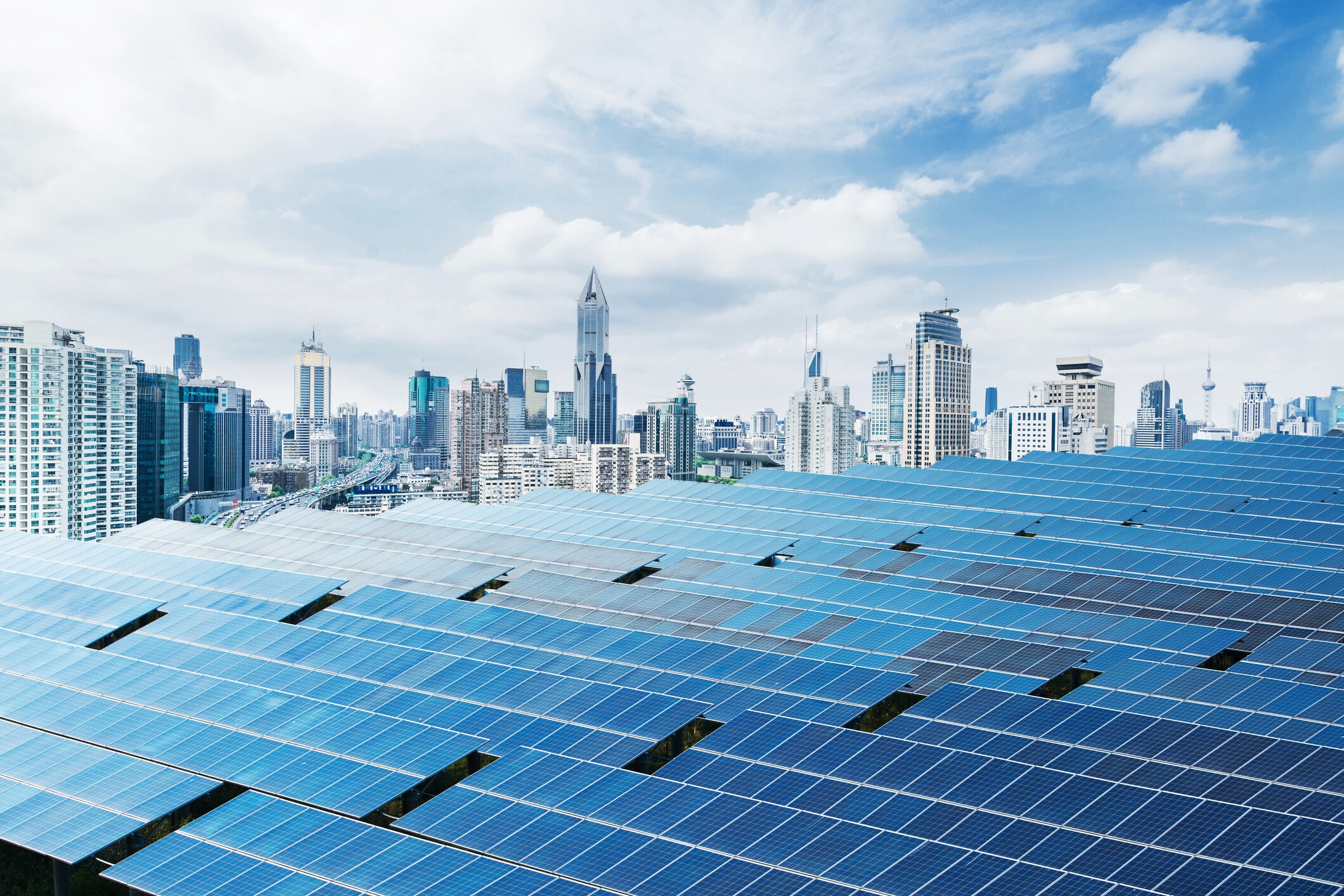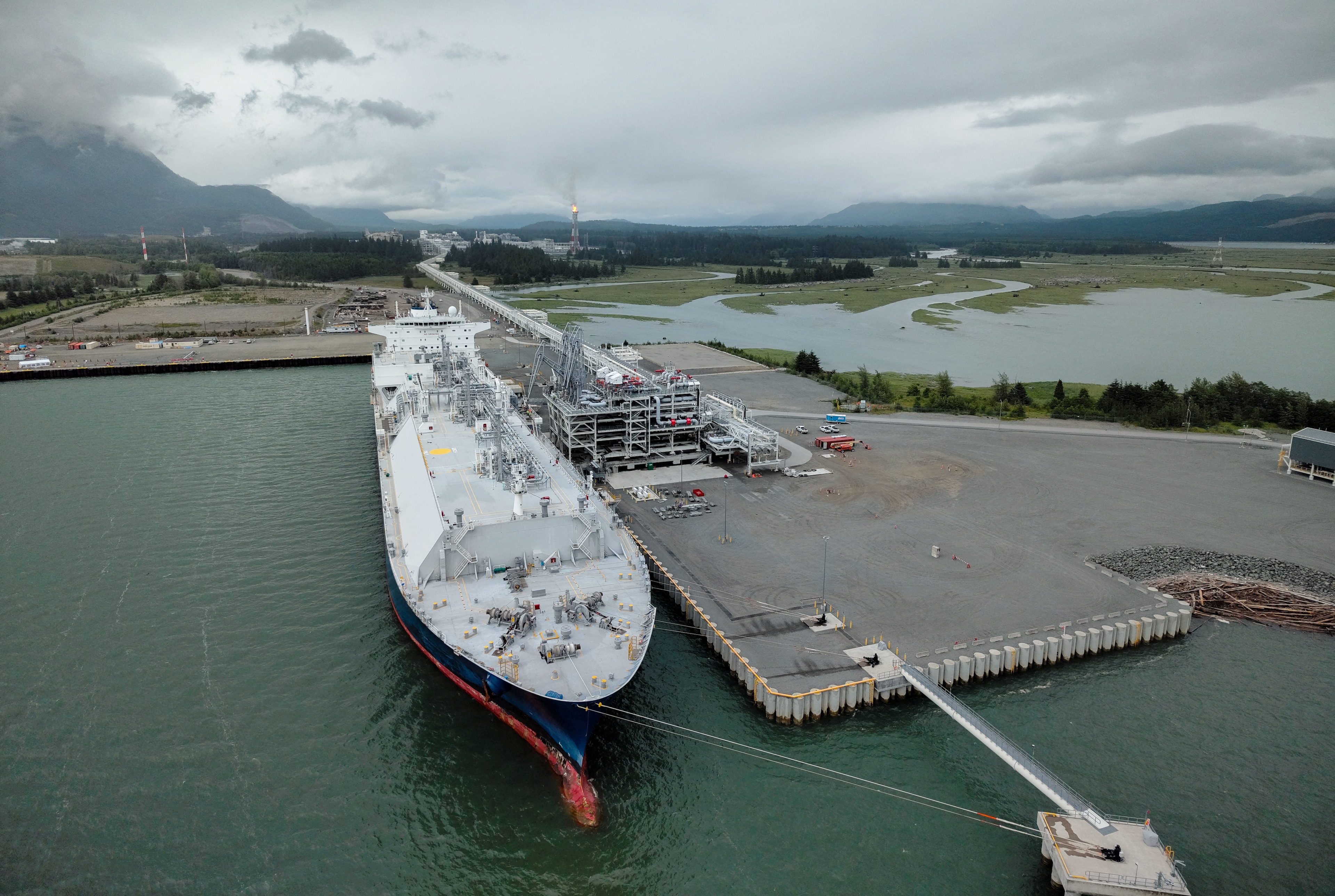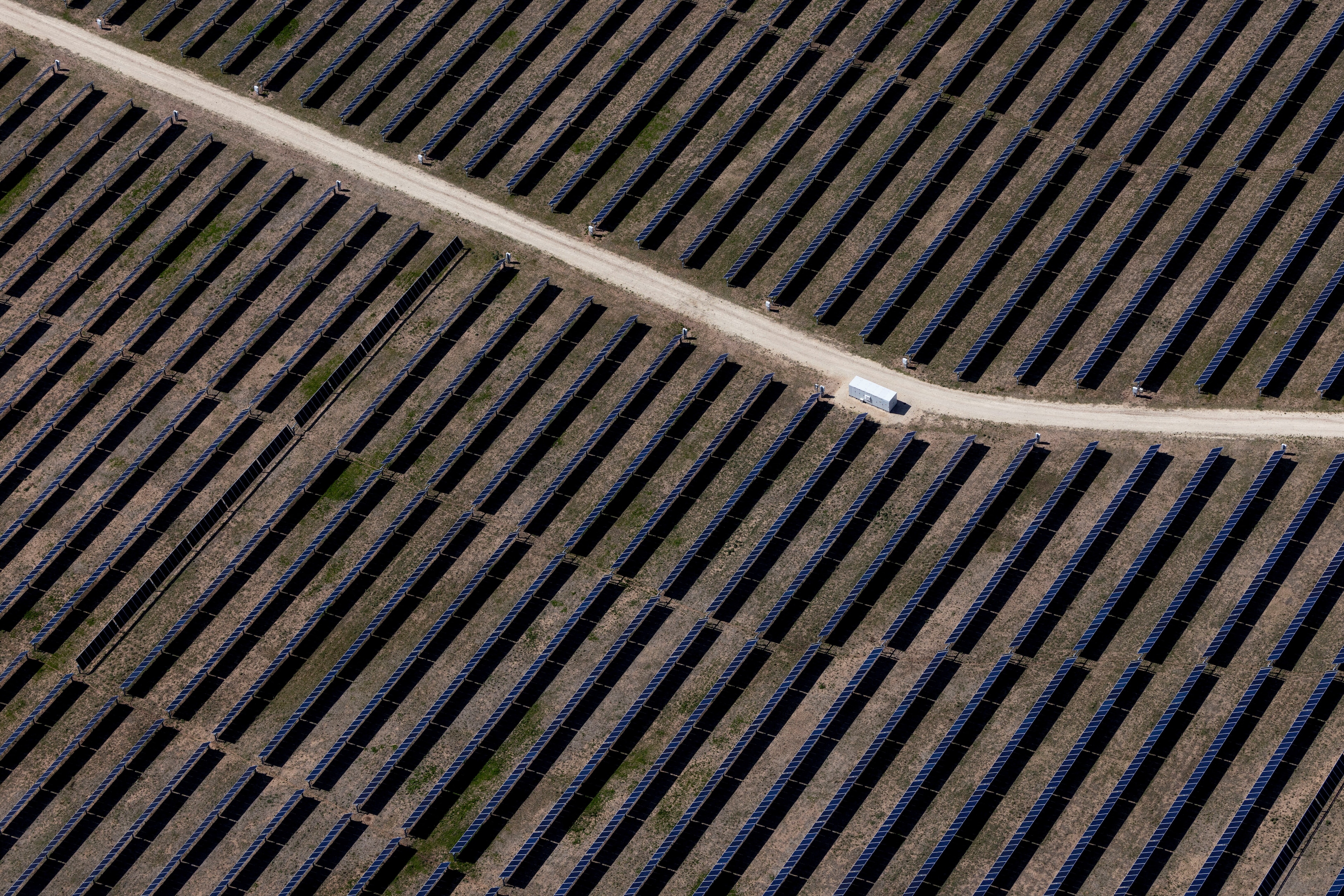Why an energy company is building the world's biggest plane

Still in development, WindRunner is the world’s biggest plane.
Image: Radia
- Energy company Radia is building WindRunner, the world’s biggest plane.
- The aircraft is designed to transport gigantic wind turbine blades to remote onshore locations, facilitating the creation of more wind farms.
- The World Economic Forum’s Global Future Council on the Future of Energy Transition champions the transition to renewable energy.
Ask people what they think of when they hear the words “flying” and “climate” and their answers are likely to involve negative environmental impacts.
Mark Lundstrom is working to rewrite this narrative, as the founder and CEO of Radia, a company building the world’s biggest aeroplane. Known as WindRunner, it will enable the transportation of gigantic wind turbine blades to onshore locations.
Why? To facilitate GigaWind, a new generation of massive onshore wind turbines that could significantly increase grid capacity, lower energy prices and avoid vast amounts of carbon emissions.
In a recent episode of the World Economic Forum’s Meet the Leader podcast, Lundstrom talked to Linda Lacina about the development of this ambitious craft and turbines, and the drivers behind his work in the clean energy space. Here are some key messages from the conversation.
Accept our marketing cookies to access this content.
These cookies are currently disabled in your browser.
What is GigaWind?
GigaWind is Radia’s name for gigantic onshore wind turbines, which are significantly more powerful than traditional turbines. This is chiefly due to their larger rotor blades, which allow them to capture far more wind energy, along with being able to operate at greater heights and in lower wind speeds.
The company says that with a conservative WindRunner fleet, GigaWind could add up to 216GW to the United States’ grid, and supply up to 40% of total US electricity generation by 2050, according to a recent report by consulting firm DeSolve LLC.
GigaWind could also lower US energy prices by up to 16%, reduce grid emissions by 15-31%, and avoid up to 760 million metric tons of CO2 emissions per year, Radia adds.
“Imagine offshore-sized wind turbines deployed onshore. What this enables you to do is have a path to the cheapest energy in the world and the cheapest green energy in the world – and it's done by using basically existing technology,” Lundstrom said.
“The world knows how to make offshore scale wind turbines. They're just deployed in the ocean. And there's this opportunity to bring gigantic turbines to onshore locations where the market is 10 or 20 times bigger and to be able to reduce the cost of onshore wind by about a third, and to be able to triple the acreage in the world where wind is economically viable.
“If one reads the analyst reports about where our energy needs to come from to meet the Paris Accord goals, there's uniformity in the opinion that onshore wind needs to be one of the biggest contributors to our primary power source.
“So we need to figure out how to make cheaper onshore wind, and the best way to do that is to use existing established technologies and be able to redeploy those great inventions that have been made for offshore wind to onshore locations.”
Explaining how the concept of GigaWind was born, Lundstrom added: “About seven years ago, a couple of the largest wind turbine manufacturers in the world together issued some industry press saying that they and the industry know how to make offshore-sized turbines, and they're just frustrated they can't move it to where the market is 10 or 20 times bigger.
“And so Radia responded to that request and started working with both of these arch rivals on a vision for GigaWind.”

What’s preventing GigaWind from happening now?
It’s a question of size, Lundstrom explained: “The only thing that's standing between us and GigaWind, offshore-sized turbines onshore, is having a transportation issue solved.
“Today, the turbines are simply too big to get under bridges, through tunnels, around curves – and that's why blades are typically limited in the 70-metre range or so onshore, whereas offshore they're well over 100 metres in length – Eiffel Tower-sized machines.”
What is WindRunner?
Still in development, WindRunner is the world’s largest plane.
“This is the first time that an aircraft has been designed to optimize on volume instead of weight, and so it's very unique in the sense that it can still move a lot of mass, 70 tons, but it has a volume that's about 12 times bigger than a 747 aircraft,” Lundstrom said.
This means the cargo hold can carry a 100-metre-plus blade – and because wind farms are typically built in remote locations, the plane will be capable of landing on short, unpaved airstrips.
“We intend to have a fairly sizable fleet operating before 2029, and with the initial flights happening well before that,” Lundstrom said.
What's the World Economic Forum doing about the transition to clean energy?
“After the initial fleet of aircraft are manufactured, we'll have operating bases around the world that will be servicing different land masses. And then from those operating bases, we will be able to deliver to a 2,000km range, and then our goal is to continue to build the fleet and to continue to deliver more and more of the turbines of the world, making them bigger and bigger, and have it have the biggest carbon impact that we can by deploying more larger turbines.”
Although WindRunner is “very unique” due to its size and landing capabilities, “there's no new aerospace technology that's being used”, Lundstrom said.
“We've basically taken off-the-shelf components that are already certified and already in mass production, and have designed an aeroplane around that,” he said. “And so the risk is quite a bit lower than most aircraft projects, because we're using things that are already flying and already certified today.”

How can WindRunner help revolutionize wind energy?
The DeSolve LLC report figures speak for themselves in terms of the potential of GigaWind – made possible by WindRunner – to deliver more clean energy.
Lundstrom added: “By being able to deploy larger turbines, we can triple the acreage in the world where wind is economically viable.
“We will have a lot more flexibility in terms of the characteristics of a site, because when you drop the average wind speed from seven metres per second that's required today, down to five metres per second that we can enable with GigaWind, you increase the landmass in the world by a factor of three – and so you open up many, many new sites that, that don't exist today.”
What inspired GigaWind and WindRunner?
Originally an aerospace engineer, Lundstrom became a technology entrepreneur 30 years ago, and addressing the climate crisis has always been a motivation.
“The necessity to fight climate change is something that's a big motivating factor,” he said.
“It's very unique to be able to have an aerospace solution to climate change, as opposed to contributing to the problem. And so for an aerospace engineer or for an aerospace company to be able to contribute their skills to fighting climate change, instead of just optimizing passenger seat miles or making a defence product, this is a unique opportunity for the aerospace industry to both get exposure into the energy world, and also be able to take many percentage points of CO2 out of the world.”
And Lundstrom’s ambitions for WindRunner to be a positive force extend beyond just wind turbines. “Being able to fly a very large amount of material into a dirt strip after a natural disaster, for example, is a capability that's very interesting to the humanitarian organizations in the world,” he said.
The World Economic Forum’s Global Future Council on the Future of Energy Transition champions the transition to renewable energy. As we face the convergence of global energy shortages, climate change, economic challenges and geopolitical conflicts, it asks: how can energy transition strategies be significantly accelerated to achieve sustainability affordably and securely?
Accept our marketing cookies to access this content.
These cookies are currently disabled in your browser.
Don't miss any update on this topic
Create a free account and access your personalized content collection with our latest publications and analyses.
License and Republishing
World Economic Forum articles may be republished in accordance with the Creative Commons Attribution-NonCommercial-NoDerivatives 4.0 International Public License, and in accordance with our Terms of Use.
The views expressed in this article are those of the author alone and not the World Economic Forum.
Forum Stories newsletter
Bringing you weekly curated insights and analysis on the global issues that matter.
More on Energy TransitionSee all
Michael Wang
July 28, 2025
Ayla Majid
July 24, 2025
Manikanta Naik and Murali Subramanian
July 23, 2025
Arunabha Ghosh and Jane Nelson
July 22, 2025
Ali Alwaleed Al-Thani and Santiago Banales
July 21, 2025
Goodness Esom
July 18, 2025






